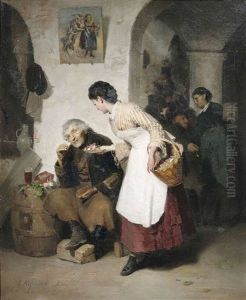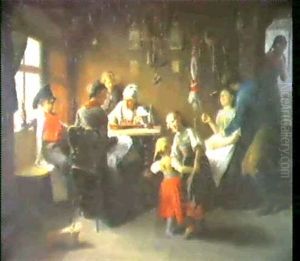Eugen Hofmeister Paintings
Eugen Hofmeister was a German artist known for his contributions to painting and graphic design during the late 19th and early 20th centuries. Born in 1876 in Germany, Hofmeister lived through a period marked by significant social, political, and technological changes, which influenced the evolution of art forms and movements during his lifetime. Despite the challenges presented by World War I and World War II, Hofmeister developed a distinctive style that reflected his keen observation of nature and human society.
Hofmeister's artistic journey began in the late 1890s when he started his formal education in art. He was part of a generation that witnessed the transition from traditional academic art to more avant-garde movements such as Expressionism and Surrealism. However, Hofmeister managed to carve out his unique path, focusing on landscapes, portraits, and urban scenes. His work often depicted the beauty of the natural world, as well as the complexities of urban life in Germany during a time of rapid industrialization and social change.
Throughout his career, Hofmeister exhibited his work in various galleries and exhibitions across Germany and Europe. His contributions to graphic design were also notable, especially in the realm of book illustration and poster design, where he applied his skills to commercial and artistic projects alike. Hofmeister's ability to adapt his style to different mediums and subjects made him a versatile artist of his time.
Despite the recognition he received during his lifetime, Eugen Hofmeister's work was somewhat overshadowed by the more dominant figures and movements of 20th-century art. However, his contributions to German art have been reassessed and appreciated in more recent years, highlighting his role in the development of modern art in Germany. Eugen Hofmeister passed away in 1954, leaving behind a diverse body of work that continues to be studied and admired for its unique perspective on the natural and human-made world.


